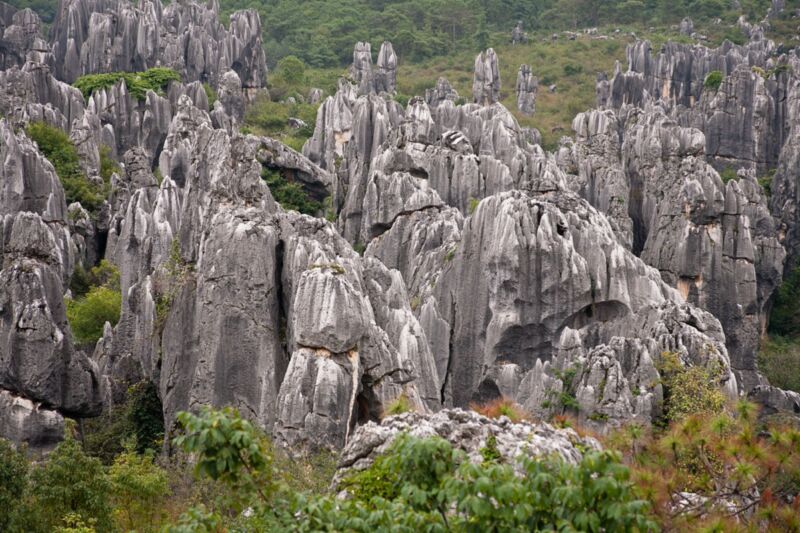
Enlarge / The Stone Forest (Shilin) in China’s Yunnan Province may be the result of solids dissolving into liquids in the presence of gravity, producing natural convective flows.
There are many wondrous geologic formations in nature, from Giant’s Causeway in Ireland to Castleton Tower in Utah, and the various processes by which such structures form is of longstanding interest for scientists. A team of applied mathematicians from New York University has turned its attention to the so-called “stone forests” common in certain regions of China and Madagascar. These pointed rock formations, like the famed Stone Forest in China’s Yunnan Province, are the result of solids dissolving into liquids in the presence of gravity, which produces natural convective flows, according to the NYU team. They described their findings in a recent paper published in the Proceedings of the National Academy of Sciences.
Co-author Leif Ristroph told Ars that his group at NYU’s Applied Math Lab became interested in studying stone forests (technically a type of karst topography) by a somewhat indirect route. They were using simulations and experiments to explore the interesting shapes that evolve in landscapes due to a number of “shaping” processes, most notably erosion and dissolving.
“We first discovered the spikes formed by dissolution when we left candy in a water tank and came back later to find a needle-like spire,” he said. “The grad student, first author Mac Huang, even accidentally cut himself when he was admiring the shape. This drew us into the problem, and we were very excited when we realized the connection to stone pinnacles and stone forests, which have been quite mysterious in their development. We hope our experiments tell a simple ‘origin story’ behind these landforms.”




